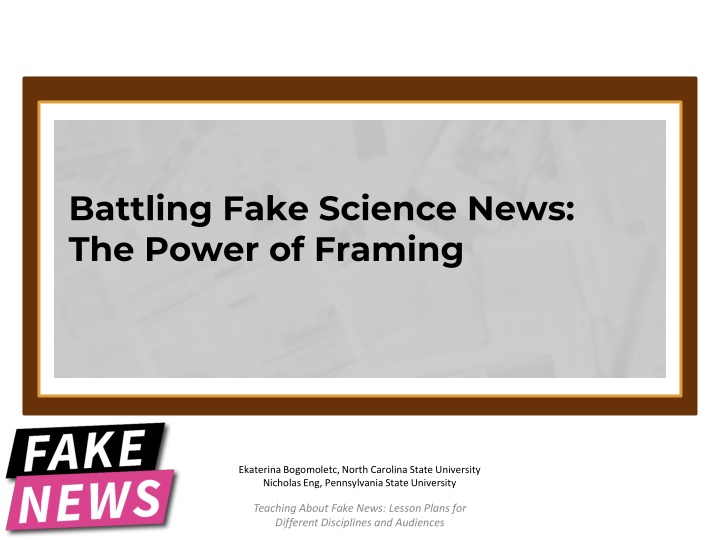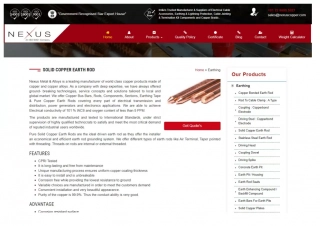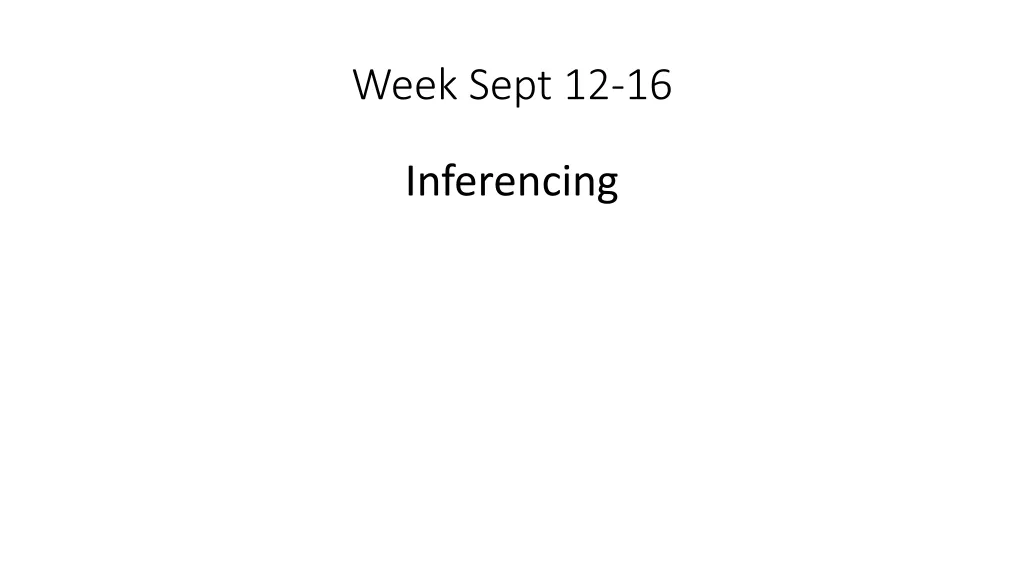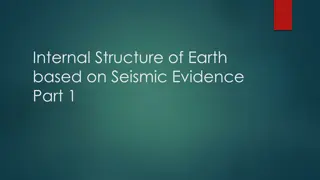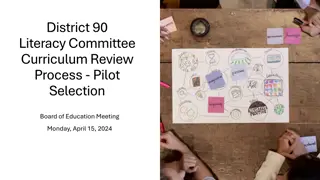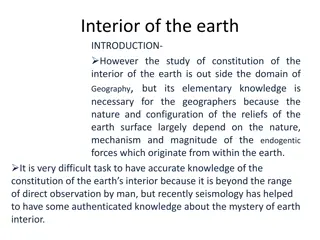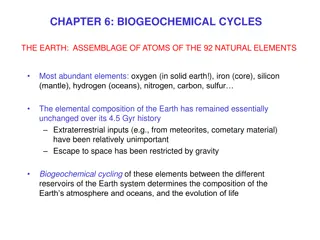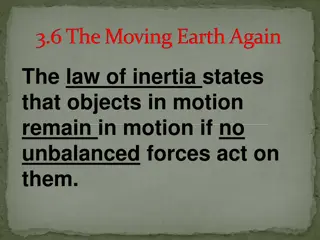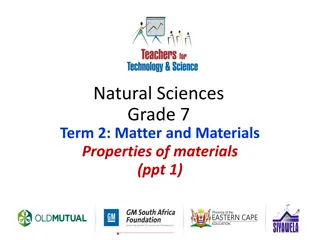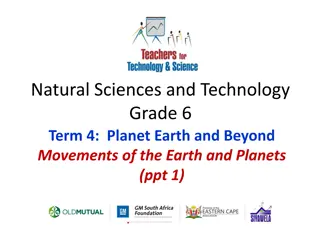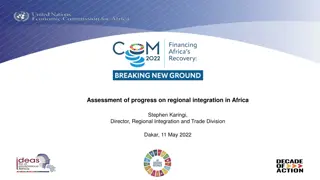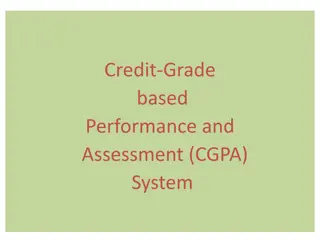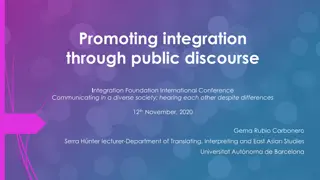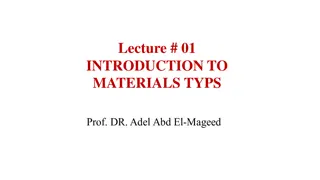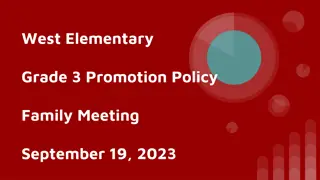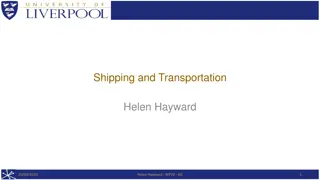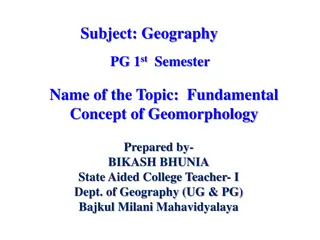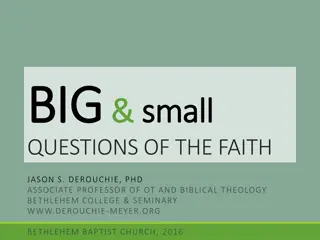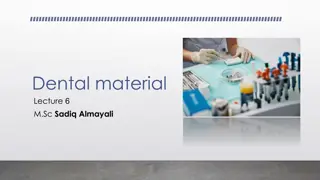Inferencing Earth Materials Grade 2 Integration
In this lesson, students explore the concepts of rocks, soil, and Earth's surface. Through inferencing activities about nonliving materials like rocks and soil, students learn about the composition of Earth's surface. They also discover why chalk is not suitable for growing plants and how beaches are made up of sand and rock. By understanding the role of soil in plant growth, students deepen their knowledge of the natural world.
Download Presentation

Please find below an Image/Link to download the presentation.
The content on the website is provided AS IS for your information and personal use only. It may not be sold, licensed, or shared on other websites without obtaining consent from the author.If you encounter any issues during the download, it is possible that the publisher has removed the file from their server.
You are allowed to download the files provided on this website for personal or commercial use, subject to the condition that they are used lawfully. All files are the property of their respective owners.
The content on the website is provided AS IS for your information and personal use only. It may not be sold, licensed, or shared on other websites without obtaining consent from the author.
E N D
Presentation Transcript
Battling Fake Science News: The Power of Framing Ekaterina Bogomoletc, North Carolina State University Nicholas Eng, Pennsylvania State University Teaching About Fake News: Lesson Plans for Different Disciplines and Audiences
Framing To frame is to choose what information to present, how to present that information, or both! Equivalent framing: Presenting logically-equivalent information Emphasis framing: Selecting the information you want to draw attention to Whether you intended to or not, you will probably be using some kind of frame to communicate scientific information Search the ACRL Sandbox for more lessons with #fakenews
Fake Science News Fake science news refers to science news that looks like legitimate news, but did not go through the rigorous journalistic process Misinformation is embedded in fake science news Consequences of fake science news Long-lasting effects on public knowledge, attitudes, and behaviors Influences governance and policy-making Search the ACRL Sandbox for more lessons with #fakenews
FRAMING GIVES THE FACTS A FIGHTING CHANCE (COOK & LEWANDOWSKY, 2011, P. 4) Search the ACRL Sandbox for more lessons with #fakenews
Framing Science News Framing science news allows the audience to answer such questions as... Why do I care? What is at stake? Who is involved? How can the issue be addressed? Search the ACRL Sandbox for more lessons with #fakenews
Framing Science News Four steps to identify frames: 1. Detecting the use of selection; 2. Detecting what issues are made salient; 3. Detecting what worldview is being promoted; 4. Analyzing how the information is presented. *The steps are based on the assignment aimed to teach students the concept of framing in Dr. Stephen B. Crofts Wiley s course COM 257: Media History and Theory and History at North Carolina State University, USA. Search the ACRL Sandbox for more lessons with #fakenews
Framing & Ethics Aim for two-way communication Provide the audience with multiple frames Focus on the audience's needs Provide accurate information Pay attention to the frames used in fake news Keep in mind the multilevel nature of framing Search the ACRL Sandbox for more lessons with #fakenews
GROUP ACTIVITY IDENTIFY THE FRAMES Take some time to read the article provided, keeping in mind the discussion questions below. Search the ACRL Sandbox for more lessons with #fakenews
Discussion Questions 1. What information about climate change is included in the text? What actors and actions are described in the text? What information about climate change could have been discussed in the article but was omitted from the text? What aspects of climate change are emphasized in the article (e.g., economics, human health)? How exactly does the article highlight them? According to the article, who/what caused the problem? What are the possible consequences of the situation? What costs and benefits are discussed in relation to the problem? Does the article discuss ethical implications of the given situation? How is climate change depicted in the text? What actions, if any, are recommended? Is the article emphasizing the benefits of certain actions (e.g., If we start recycling now, we can help our marine life ) or possible losses of inaction (e.g., If we do not recycle, we are continuing to hurt our marine life )? How does it affect readers perceptions of the information? Who is the target audience of this article, and how can you present the same information so that it appeals to a different target audience? 2. 3. 4. *The discussion questions are based on the assignment aimed to teach students the concept of framing in Dr. Stephen B. Crofts Wiley s course COM 257: Media History and Theory and History at North Carolina State University, USA. Search the ACRL Sandbox for more lessons with #fakenews
STUDENT PRESENTATIONS Take 10 minutes to prepare a one-slide presentation summarizing your thoughts on the article based on the discussion questions. Search the ACRL Sandbox for more lessons with #fakenews
Final Thoughts 1. How can science communicators use framing techniques while still ensuring unbiased reporting? How do the different frames used in climate change discussions influence different audiences differently? What does it mean for those who want to combat fake science news? How can science communicators frame science news to best reach different audiences? How can the use of framing techniques be helpful in addressing fake science news? Is unbiased reporting at odds with the use of framing techniques? Should science reporting always be unbiased? Why or why not? 2. 3. 4. 5. Search the ACRL Sandbox for more lessons with #fakenews
